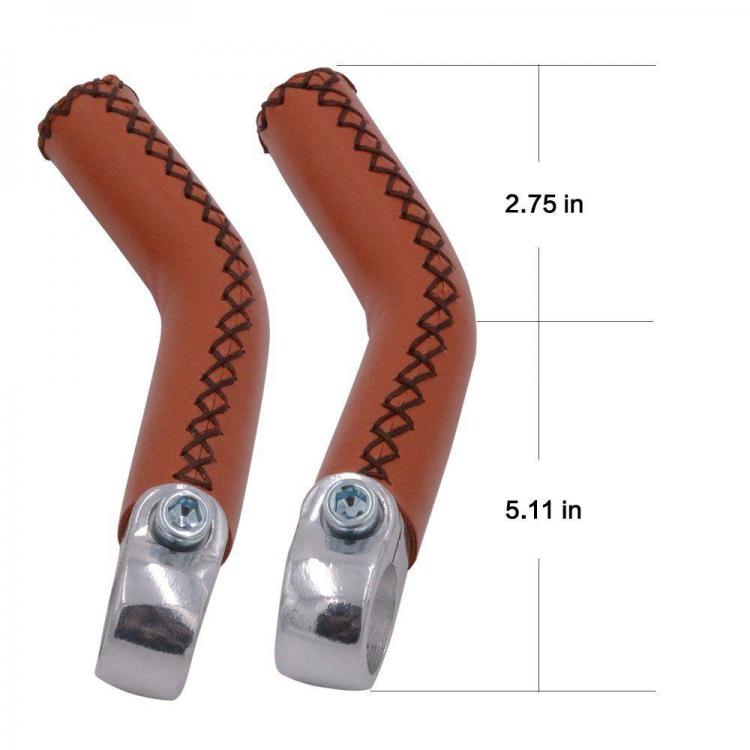-
Posts
2,656 -
Joined
-
Last visited
Content Type
Profiles
Forums
Events
Blogs
Gallery
Everything posted by Tugadude
-

Resolene Substitue?
Tugadude replied to muzzleblast's topic in Gun Holsters, Rifle Slings and Knife Sheathes
Armstrong Shine Keeper appears to be still available. Perhaps the distributor or retailer you deal with stopped stocking it. -
https://www.etsy.com/shop/DWLeatherworks
-

Bi-Fold(?) Wallet
Tugadude replied to ThatTallChick's topic in Purses, Wallets, Belts and Miscellaneous Pocket Items
Slight point of clarification on this. The edges of the awl should not be very sharp. The tip needs to be, but as the awl tapers outwards, the edges should be more polished than sharpened. The reason is you don't want the awl to cut a hole as wide as the awl is. The idea is to cut through the leather and then expand the hole, not cut it. That way it will allow itself to close back up. If you cut the leather, hammering will flatten the hole but it can't "heal" itself. The smaller the hole the better so long as there is room for the thread to do what the thread needs to do. -
-
I think that good work should be celebrated and you should go check out the work on benlily1's website... http://www.buttskinz.com/ Truly remarkable seats.
-

Multi tool pouch
Tugadude replied to 24569030's topic in Purses, Wallets, Belts and Miscellaneous Pocket Items
Very nice. It is a great feeling to craft something with your hands, isn’t it? You are off to a great start. With time and experience you will improve on all the small details. Thanks for sharing that project with us. -

Desperately need advice for quality hand tools!
Tugadude replied to TravisRising's topic in Leatherwork Conversation
You mentioned you'd like to do tooling and for that, Barry King would be a good place to start. While there, you can also check out his mauls and awls and swivel knives. https://www.barrykingtools.com/ -
Yes, thanks! I love the respect given to the trade.
-
Whenever you want an answer, you just to to the internet, right? So I did just that and typed in "longevity of leather goods". The results were interesting if not a bit underwhelming. Some of the info leads me to believe that leather can last from 10 to 20 years! Your belt should be bragging at this point. Obviously whoever wrote 10 to 20 years was being extremely conservative. We all know that quality leather, properly cared for (and obviously sometimes not) can last a lifetime. The number I saw repeated several times was 100 years, assuming it is full grain leather and cared for. One site listed 5 things that can shorten the lifespan of leather. Exposure to Sunlight. Leather's arch-nemesis is that big bright ball in the sky–the sun. ... Extreme Changes in Temperature. ... Not Cleaning Stains Right Away. ... Use Harsh Chemicals and Soaps to Clean Your Leather. ... Too Much Heat. What isn't mentioned there is what can be done to prolong the health of leather. Leather conditioners will extend the useful properties of leather, helping to avoid drying out and cracking.
-
Super clean work! The dog might not appreciate the beauty but its human will.
-

Waxed cotton thread. Is it a bad choice?
Tugadude replied to Riccardo's topic in Leatherwork Conversation
So glad that I was able to help! The corners look very nice. -

Waxed cotton thread. Is it a bad choice?
Tugadude replied to Riccardo's topic in Leatherwork Conversation
Your work looks very nice. The stitching is very regular in appearance, with a nice slant to it. But I think that thread is just a bit too big for the project. I'd like to see you go to a 0.6mm thread. I think it would present a better look. There is also what appears to be a ton of wax in-between the thread and the holes. You might try rubbing that with a cloth to remove the excess. As far as the thread, you will receive some differing opinions and I respect them all because they are being offered through each person's experience. Having said that, I don't think it is ever "necessary" to use a stitching groove. Based on what I've read, that is something more popular in the U.S., but when it comes to the rest of the world, not so much. And it doesn't seem to reflect negatively elsewhere. Stories of 100 year old English saddles stitched with quality linen thread and no groove say that they hold up just fine. And again, I accept that, but part of me also says there has to be some merit to having the thread recessed. So long as you aren't compromising the overall thickness of the leather, having the stitching below the surface or even close to the surface seems like it would be a benefit. As far as the type of thread, I've mainly worked with polyester and linen. I can't really speak to the longevity of cotton. My guess is it won't hold up as well as a quality linen thread. Keep up your excellent work, the stitching really does look very uniform and neat. I just think the thread is a bit chunky for the wallet. -
Also, since bicycles are often ridden in the rain, you might give consideration to going with a water-resistant leather such as Hermann Oak's Heritage 1881. Springfield Leather Co. will sell it by the square foot. https://www.springfieldleather.com/Hermann-Oak-Heritage
-
Talk about an ambitious first project! Actually, many here would be proud to say that was their first. Most probably practice on small stuff first to get the basic techniques down. I admire your decision to just go for it! Dying is something that takes time to master. Sure, there are some basic things you need to do, but it is a learned skill like anything else. And there's always options, for example you could dip-dye smaller pieces. I usually dye a large piece first and then cut the sections out of it, but you don't have to do it that way. You could do them individually and that might help to keep things more consistent. Experience will tell you. Your stitching is way better than most people's first attempts in my opinion. So good job on that. As far as tapping it down, on something like this I wouldn't bother. Edges and burnishing is something that again will take some time to work out. Everyone has their own personal method. I think there are some "sticky" topics in the "how to" section dealing with edging and burnishing techniques. You will also find the topic discussed all over the forum in other threads. Some cut and then sand then burnish, some don't sand much at all. Everyone is different. Some use plain water to burnish, some saddle soap, some gum tragacanth and still others Tokonole. Gum Trag and Tokonole aren't too expensive, so maybe try them both. They should help to get rid of the "hairy" look on some of the edges. What I'd do now is use beeswax on the edges and burnish again. Did you use an edger on the leather before burnishing? That might also help you. You asked about pulling the thread. It depends sometimes on the leather. On some leather you can pull very tight and not deform it while on softer leathers if you snug it up too much it distorts the leather. Just pull firmly and stop if it seems to be causing the leather to go out of shape. That's the best I can do with a description. Keep up the good work! Maybe do some small stuff to keep sharpening your skills and then attack another bag. I'll bet it is even better the next time!
-
Great work and an even greater gesture. Good on you!
- 4 replies
-
- figure carving
- portrait
-
(and 1 more)
Tagged with:
-

Getting slanted stitches only on back side
Tugadude replied to allenayres83's topic in Sewing Leather
It probably would be helpful for you to post pictures. Many don't follow the written description as well as a visual example. Just the way it is these days. -
You are right that there is conflict in terminology. The remedy is to know what you are looking for, not what they say it is. Many manufacturer's don't market their tools properly in my opinion. They call it one thing when it is clearly fit for some other purpose. I've attached photos of various tools to this post. They all have similarities, yet they are all quite different. Sometimes their purposes overlap, sometimes they don't. I like to think about it this way. Any time the word "pricking" is used, it means that tool is designed to make marks that do not go all the way through the leather. It is used solely to mark the locations where you will penetrate the leather with an awl. Will pricking irons fully penetrate thin leather? Of course, but that isn't their intended purpose. Because of the taper of the teeth, fully penetrating thicker leather would yield a massive hole. Not good! Stitching irons ARE intended to go straight through leather, rendering the use of an awl unnecessary. Can they be used to simply prick the leather? Of course, and some do use them for that purpose and finish up the hole with their awl. Notice the slender teeth and the fact that they don't widen like their pricking iron counterpart. Stitching chisels are very similar to stitching irons but the hole they make is more chunky as compared to the irons. They also tend to have a pronounced diamond shape. Again, can they still be used to prick the leather, sure, with light pressure they'll mark a line of stitch-spacing as well as any other iron or wheel.
-
I bought a set several months ago and I really like them. Sure, they are small, but they do the job and take up less space, so for me it isn't a negative. I've found that they teeth are very smooth and they come out of the leather very easily compared to several other sets I've tried.
-
Being a hobbyist, I don't order near the stuff that many here do, but I did order twice from Tandy in the last 8 months. They shipped each time in a very timely manner and the material was as advertised. One was some belt strips that were on sale super cheap. I was impressed by the quality. One thing to keep in mind is the impact the pandemic has had on many industries. Tandy has been affected along with the rest of them. A friend of mine is restoring a vintage Camaro automobile and has had to wait months and months to get things that shouldn't be an issue. And if you are looking for certain bicycle parts, good luck. Shortages and stock-outages exist all around.
-

KL basic stitching diamond chisel
Tugadude replied to ThreeLRanch's topic in Leatherwork Conversation
They look very, very similar to the ones I bought from Springfield Leather Co. They are working just fine. They are polished pretty well and pull out of the leather fairly easily. -
Bumping this thread. Hopefully someone will see it that owns the book and can give us a review of it. It is on my list to purchase this year, just have other pressing matters.



